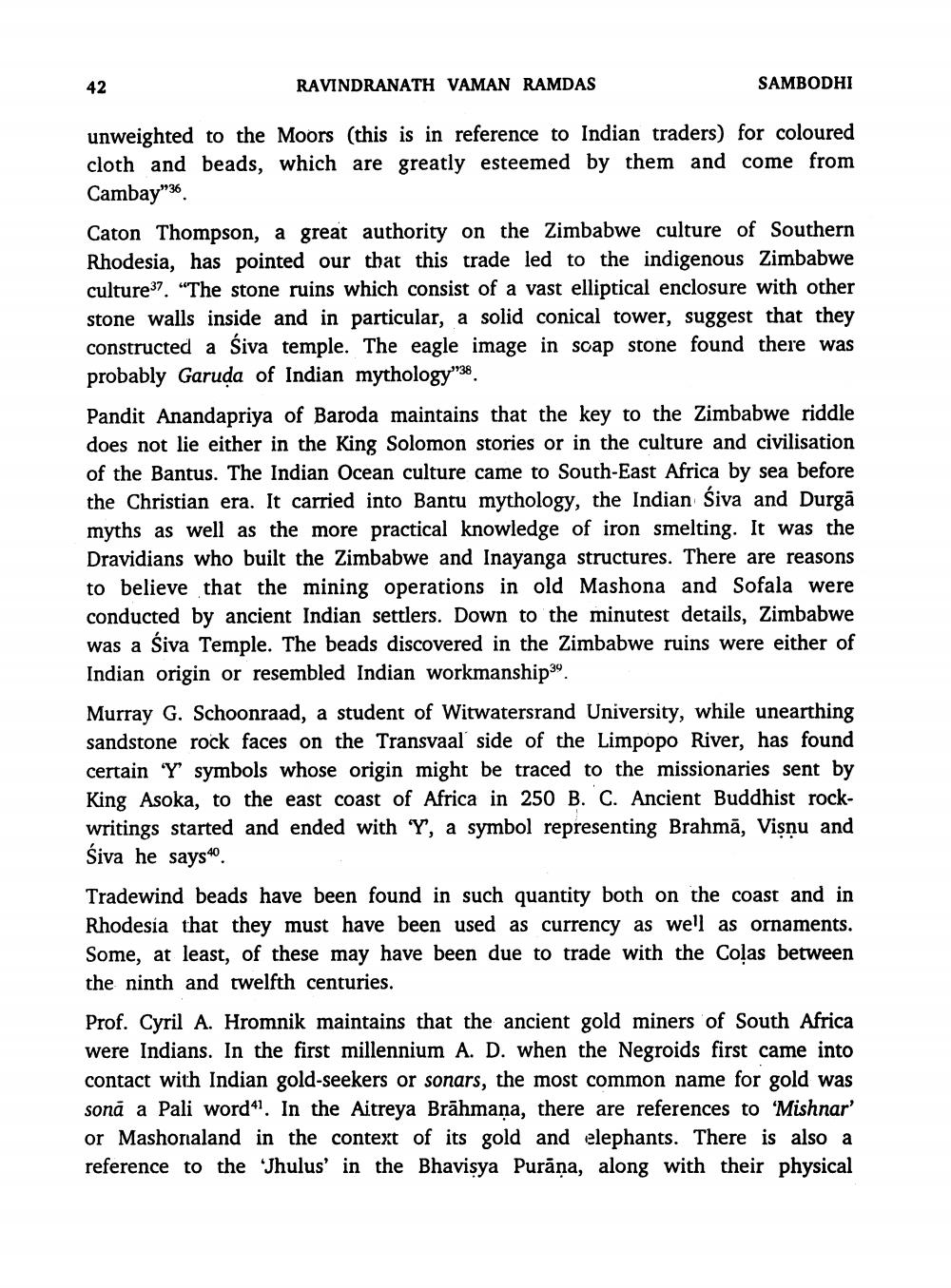________________
42
RAVINDRANATH VAMAN RAMDAS
SAMBODHI
unweighted to the Moors (this is in reference to Indian traders) for coloured cloth and beads, which are greatly esteemed by them and come from Cambay"36 Caton Thompson, a great authority on the Zimbabwe culture of Southern Rhodesia, has pointed our that this trade led to the indigenous Zimbabwe culture37. “The stone ruins which consist of a vast elliptical enclosure with other stone walls inside and in particular, a solid conical tower, suggest that they constructed a Śiva temple. The eagle image in scap stone found there was probably Garuda of Indian mythology"38. Pandit Anandapriya of Baroda maintains that the key to the Zimbabwe riddle does not lie either in the King Solomon stories or in the culture and civilisation of the Bantus. The Indian Ocean culture came to South-East Africa by sea before the Christian era. It carried into Bantu mythology, the Indian Śiva and Durgā myths as well as the more practical knowledge of iron smelting. It was the Dravidians who built the Zimbabwe and Inayanga structures. There are reasons to believe that the mining operations in old Mashona and Sofala were conducted by ancient Indian settlers. Down to the minutest details, Zimbabwe was a Śiva Temple. The beads discovered in the Zimbabwe ruins were either of Indian origin or resembled Indian workmanship34
Murray G. Schoonraad, a student of Witwatersrand University, while unearthing sandstone rock faces on the Transvaal side of the Limpopo River, has found certain Y symbols whose origin might be traced to the missionaries sent by King Asoka, to the east coast of Africa in 250 B. C. Ancient Buddhist rockwritings started and ended with Y, a symbol representing Brahmā, Visnu and Śiva he says.
Tradewind beads have been found in such quantity both on the coast and in Rhodesia that they must have been used as currency as well as ornaments. Some, at least, of these may have been due to trade with the Colas between the ninth and twelfth centuries.
Prof. Cyril A. Hromnik maintains that the ancient gold miners of South Africa were Indians. In the first millennium A. D. when the Negroids first came into contact with Indian gold-seekers or sonars, the most common name for gold was sonă a Pali word“l. In the Aitreya Brāhmana, there are references to 'Mishnar' or Mashonaland in the context of its gold and elephants. There is also a reference to the 'Jhulus' in the Bhavisya Purāna, along with their physical




